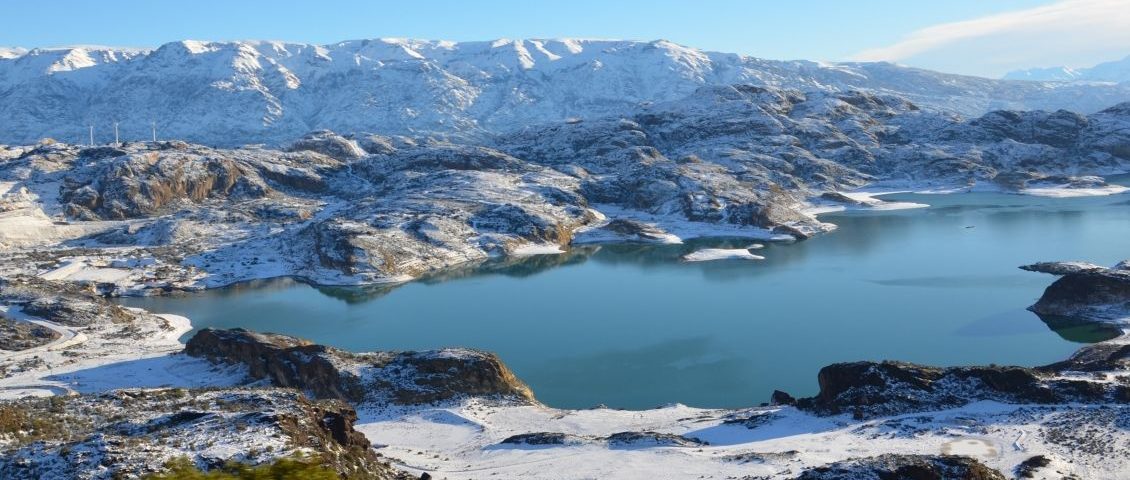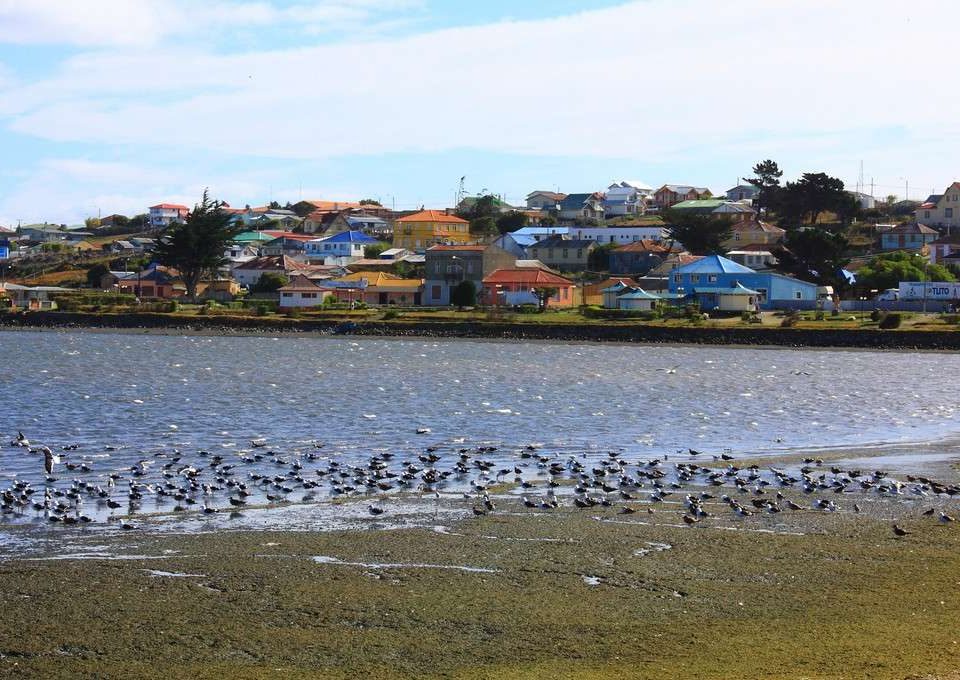Coyhaique

Cochrane

Port Aysén
Cochrane is the only populated center of the commune in which it is located, with about 2800 inhabitants. It was founded in 1954 as Pueblo Nuevo in the Chacabuco Valley, and today it is located in Aysén, in an area of 8500 km. It is surrounded by mountains, among them the Baez, the Cordón Esmeralda and the Tamango.
In addition to mountains, several of them glacial, Cochrane is surrounded by native forest, with species such as lenga, air, cypress and coigue. Also, there are typical animals of the area, such as the Huemul, which is the symbol of the commune and lives in the Tamago National Reserve at 9 kms. from the city; and guanacos, foxes, pumas, hares, condors, eagles, ducks, thrushes and hawks, among others.
Another feature of Cochrane is the wind, which has formed with its passage a series of mountains and that allows it to grow a very particular vegetation, especially in the pampa. Near the city passes the Baker River, the largest river in the whole country, which has great energy potential.
The landscape is of an imposing beauty, where millenary forests and crystalline lakes, snowy mountains and valleys that continue almost unexplored are united. The inhabitants survive thanks to livestock and tourism, maintaining traditions of country in a place so far away.
Attractions
In addition to the town in Cochrane, you can visit other nearby places, among which are:
Reserva Tamango:
It is located north of Cochrane and occupies almost 7000 hectares. It is the closest place to the city where there is native forest, and is the most important refuge for the fauna of the area. Here lives Huemul and Guanaco, the largest land mammals in Chile, protected by all laws in the country. There are also other smaller animals (foxes, ducks, pumas), and a great variety of vegetation, which give a magnificent vision thanks to the change of colors in its leaves, especially the autumn.
Cochrane Lake:
Managed by Conaf, here you can practice sport fishing and spend the night in one of the shelters installed next to the lake. You can also take walks around and rest. Laguna Esmeralda: It is 7 kms from Cochrane and its waters have a pleasant temperature in summer, ideal for swimming and practicing sports by boat. It is possible to fish trout, as in other lakes of the region, and observe the landscape that is composed of mountains and forest.
Valle Chacabuco:
It is one of the first occupied places in the region, so it has historical and cultural importance, especially the presence of Tehuelches. It is crossed by the Chacabuco River, but it is a glacial valley, where animals such as guanaco and huemul live. Here you can visit the farms once installed for livestock, and attend the shearing of animals or go for a walk on horseback.
Northern Ice Fields:
Completely covered with ice, it is a vast area where mountains and valleys meet eternal snow. You can practice high mountain sports and adventure tourism. Together with the Southern Ice Fields, they are the largest freshwater reserve in the world.
Coyhaique is the capital of the Region of Aysén with a population close to 42,000 inhabitants; Integra along with the communes of Lago Verde, Aysén, Cisnes, Guatiecas, Ibañez River, Villa O’Higgins, Cochrane, Chile Chico and Tortel, part of the Chilean Patagonia.
Its name will come from “Coy”, word of Mapuche origin that means coihue or coligüe; although, on the other hand, it is said that it is of tehuelche origin where the word “Coi” (water) and “Aike” (place) happened to create the word “place where there is water”, a presential resource in the region.
The city is surrounded by majestic surroundings; On the one hand, the Patagonian Mountain Range, on the other, lakes, rivers and lush forests, resulting in a landscape similar to the Swiss Alps or places of Scandinavia.
Among its natural attractions for the visitor are the lakes Cold, Pollux and Castor, south-east of Coyhaique, there you can find a variety of native flora and fauna, such as trout, desired by amateur fishermen and experts ; Lake La Paloma, 42 kms. south of Coyhaique, it projects a succession of three lakes from east to west: Blue Lake, La Paloma Lake and Desert Lake.
Elizalde Lake, located 33 kms. to the southwest of Coyhaique, it lodges an abundant forest of lenga and coihue to his around, in addition to trout and salmon of varied types; next to this Lake Caro is located at the western end of the Elizalde that flows into the Blanco River, and then drains into the Aysén River. At 25 kms. of Coyhaique is the small Lake Atravesado and going by the route towards Coyhaique Alto, to 22 kms. of the city, is the Dos Lagunas Natural Monument, where is the Laguna El Toro and Laguna Escondida; this site has a small beach and sites of great pleasure for camping or picnic. Allows pleasant excursions appropriate for the observation of wildlife.
Attractions
Besides knowing the Cold Lakes, Pollux and Castor, Lake La Paloma, Lake Elizalde: Crossed Lake, Dos Lagunas Natural Monument, Lake Caro, among others, it is possible to enjoy the Historical Museum of the city, pubs, restaurants, tours by other cities bordering to Coyhaique and many more surprises.
Activities
One of the main activities to do is fly fishing in the various existing lakes, kayaking and rafting in the nearby rivers, in addition to enjoying the landscapes by trekking or cycling among the native forests or touring the city and its attractions.
Information
Location: It is the capital of the XI Region of Aysén of General Carlos Ibañez del Campo.
How to get there: Through the Carretera Austral it is possible to get to Coyhaique; By sea it is possible to leave from Puerto Montt to Puerto Chacabuco, with approximately 22 hours of sailing. By way of the area, it can be reached from anywhere in the country to the Balmaceda and Teniente Vidal airports. Another way to get to Coyhaique can be from Argentina, in the International Pass of Coyhaique Alto, 45 kms. northeast of Coyhaique. Further south, is the International Pass of Balmaceda, 55 kms. southeast of the city of Coyhaique. Something further away is the Chile Chico Border Crossing, 4 kms. to the east of Chile Chico and 345 kms. of Coyhaique. Finally there is the Interregional Pass The Board that constitutes the entrance door to the Region of Aysén by national territory, 269 kms. north of Coyhaique. For this pass those passengers from the Region of Los Lagos, via Camino Austral.
When to go: Coyhaique receives visits throughout the year.
Climate: The climate is quite rigorous, being cold all year round and rainfall exceeding 2,000 mm. with winter snows.
Services: The city offers basic services of food and lodging, interurban land transport, travel agencies, water transport, air transport, car rental,
taxis, and tour buses and airport transfers.
Surrounding areas: Lake Elizalde, Lake Atravesado and Siete Lagunas, Coyhaique River, Natural Monument Lagunas El Toro and Escondida, Lake Costa Palux and Lago Frío, Farellón and Laguna Foitzick, Simpson River, Pto. Aysén.


